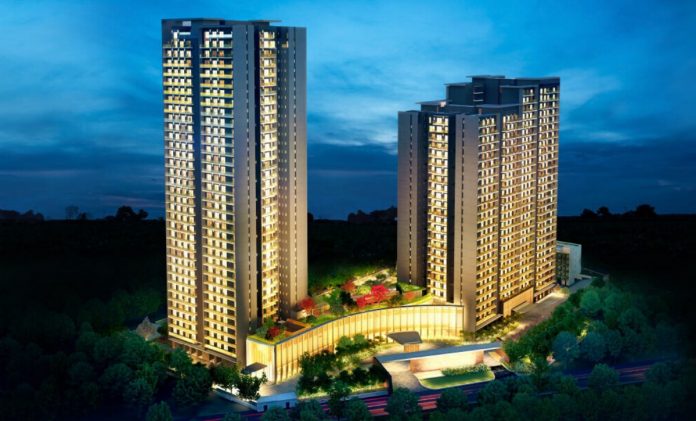This article is written by Deepali Shimaria, pursuing a Certificate Course in Real Estate Laws from LawSikho.
In India, the Real Estate Sector has become the fastest growing business after the agricultural sector. To bring professionalism and a format in this sector there are several statutory compliances and approvals, which needs to be cleared and approved by the developer even before starting the construction of the project. Even before the RERA Act 2016 was introduced, these statutory clearances were even then mandatory but this recently introduced act has brought a remarkable change by creating the guidelines, allocation of funds & management, time limit to complete the project etc, and has brought an extraordinary amount of transparency and arrangement in transactions.
This process of approvals and statutory clearances can be very menacing and annoying, as it requires several approvals such as ownership certificate, building layout approval, non-agriculture permission, numerous NOCs, permission from NHAI, approval from electricity, water, & fire fighting department, commencement certificate, & much more to initiate the construction which can typically take 1-2 years to seek these clearances. Even if there is a deferral of 2/3 days, it can cause delay to a larger extent, thereby dampening the overall project delivery. Any Project that launched without these approvals will summon penalty in the form of fines and even prosecution. These approvals can be classified into 3 categories based on the project stages.
- The feasibility stage
- The sanction stage
- The completion and post completion stage
A detailed procedure stage wise required to get approvals and sanctions is mentioned below:
Table of Contents
Land Title and its Clearance?
Initial stage of the construction is land title and land clearance, because the developer purchases the land first and then begins the construction on the project. Hence, it is very important for the developer to get the clear title for the plot where he has to initiate his project. Clear title of the plot warrants that the present status of property is clear, marketable and free from all encumbrances, there is no mortgage, lien, third party right created on the property and the developer holds free right to construct the project without any litigation on the same. It empowers a prospective buyer to identify the chain of holdings, transfers over a period and checks disputes if any in respect to the ownership of the property.
To know whether the title of the land is clear or not, the developer through is Advocate or Solicitor will put an RTI application to the concerned authority in respect to the connected documents i.e. 7/12, mutation entries etc. and any other documents that they feel proper of last 30 years or 60 years. The Advocate of the developer will verify those documents and based on it a title certificate will be on his letterhead or by Patwari/ Tehsildar on the stipulated time.
Even before buying a property, the developer can also check the basics of the property i.e. ownership/lien of land/plot by pulling out Encumbrance Certificate from the office of the sub registrar.
Land Clearance
Once the procedure of title is over, the developer needs to begin the process of approvals and sanctions on land clearance. The land can be agricultural or non-agricultural land depending upon the location or city. Owing to agricultural land it needs to be converted into non – agricultural land, by getting approval from concerned authority, which can further be used, for construction of the project, which is going to be constructed for the residential or commercial purpose.
One of the research site “The Reality Guru” says Approval for change in land use of the plot is required from local body and the State Ministry of Urban Development (UD), when the land use shown in master plan / zonal plan (where the plot is located)/ land allotment letter is to be changed (as the same is not permitted / not compatible with master plan/ zonal pan). The land use plan for the land area is to be notified by the State Ministry of UD after the local body approves the same.
What is Zonal Clearance?
Once the procedure land title and land clearance is over, the developer further is liable to take zonal approval from the concerned authority. On the clearance of the zonal level, the department of revenue will provide 7/12 or the ownership certificate to the developer for the project plot. Once this procedure in over, the Town Planning Authority comes into the picture, The authority will check the development plan as per the zonal city, then this plan will be verified by the planning board and then will be forwarded to the other concerned authorities for further NOC’s and any other specific approvals if needed even before giving the zonal approval.
According to development control regulations there are approximately 51 zonal clearances required for the developer to get complete zonal approvals or sanctions or NOC’s.
Building Plan Approval and its Clearance
All Buildings to be constructed by any party require prior approval from the Local Authority where buildings are to be constructed. This control is introduced to ensure that the buildings and structures constructed are safe and on suitable location and in habitable places for working and dwelling in accordance with the byelaws. Building plan is a document in the form of drawings made by qualified Architects and Engineers which contains a minute details in respect to the structure to be constructed. There are various reasons where a building plan needs to be amended before its submission to the local authority. i.e;
- To comply with guidelines and regulations of the Local / concerned Authority.
- To add or delete any information mentioned in the plan.
- To correct any wrongly given information to the concerned authority.
There are various types Plan to be considered while submission:
- Sketch Plan
- Site Plan
- Location Plan
Building Plan Approval submitted will take approximately 6 months from the date of submission of the forms and plans required under the bye laws of the state/local/concerned authority.
There is a very lengthy procedure on how to get a building plan approved.
Intimation of Disapproval
Intimation of Disapproval (IOD) mentions circumstances that need to be obeyed during different phases in Construction of the Project. IOD is issued under three conditions:
(i) On or before the commencement of construction.
(ii) In between or during the construction period.
(iii) On completion of the construction.
Commencement Certificate
In layman terms, commencement certificate is the consent to begin construction from local development authority. IOD and CC are very important documents; the developer cannot lay foundation stone or build boundaries or walls around the demarcated area if these documents are not issued.
Completion Certificate
Once the construction of the project is accomplished, the concerned authority issues Completion Certificate (CC) once the process of inspection is over by them. This certificate is mandatory for the developer’s project as only after getting CC developer can sell the premises or project to the prospective buyers. This certificate ensures the prospective buyer that the construction of the project is as per the approved plan by the concerned authority.
Services & Utilities Installation
The developer is liable to get approval from concerned authorities for Lift installation, fire, electricity, gas, sewer or water supply and/or water for drinkable and non-drinkable usage. The developer should get NOC from the pollution board, municipality and/or respective authority for digging a bore well on the project.
Occupancy Certificate
This is the last certificate that is to be issued by the authority before the prospective buyers take possession of their premises or any part of the building. The concerned authority will verify the documents and will check with other local bodies in case of any pending approvals/ NOC before granting completion certificate and/or occupancy certificate to the developer.
Conclusion
In my opinion the developer needs to take more than 70 approvals from the authorities, which may at times become a tedious and annoying job. The government should focus on how to ease this tedious job by the developer. The nod given by the UP government in respect to the Single window approval for the statutory clearance should be welcomed and accepted by other states too. As many a times all these clearance get delayed due to which the builder cannot complete the construction on time which further gets delayed in giving possession to the prospective buyers. Being aggrieved by the delayed possession these buyers tend to file suit against the developer which in turn creates complexities in the relation between them as well as gives a negative impact on this sector. The cost impact is highly affected by paying interest on the loans taken by the developer to complete the project. Hence I appreciate the single window approval system in our country that will simplify these complexities in a minimal financial cost as well as less physical and mental stress and help developers complete their project on the stipulated time.
Students of Lawsikho courses regularly produce writing assignments and work on practical exercises as a part of their coursework and develop themselves in real-life practical skill.
LawSikho has created a telegram group for exchanging legal knowledge, referrals and various opportunities. You can click on this link and join:
 Serato DJ Crack 2025Serato DJ PRO Crack
Serato DJ Crack 2025Serato DJ PRO Crack











 Allow notifications
Allow notifications



